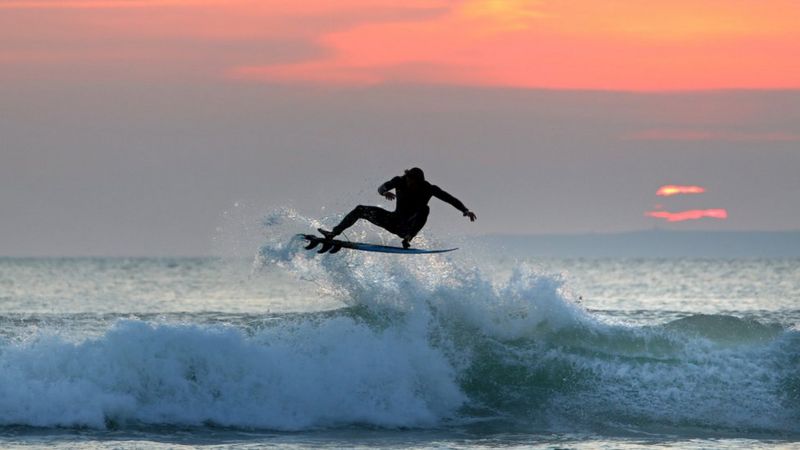There are countless surfing beaches in the world. There are all kinds: giant waves, small waves, rocks, sand, palm trees, deserts, coral reefs, fish and a lot of characteristics that identify them.
But among all of them there are only 12 that have the recognition of being considered World Surfing Reserve.
Number 12 was recently accepted. It is a coastline of about 30 kilometers around Braunton Burrows, on the north Devon coast in southwest England.
“We are delighted to have this extraordinary coastline recognized for the quality of its surf and valuable ecosystem,” Kevin Cook, a surfer and admirer of an area that is also part of the World Network of Biosphere Reserves for its spectacular scenery, wildlife and cultural heritage, told the BBC.
The Devon coast is also part of Unesco’s World Network of Biosphere Reserves.
“We can now work together to protect this area for generations to come,” he added.
And that is what the Save the Waves Coalition’s 2009 initiative, which aims to protect ecosystems around the world by using surfing as a vehicle for long-term coastal conservation, is all about.
The process
The first beach in the world to be distinguished as a World Reserve was Malibu, in California, a place where surfers from all over the world have gathered for a century to chase the “perfect” wave.
Malibu was noted at the time for “the fundamental role it played in the birth of modern surf culture,” as well as for the richness of the ecosystem that surrounds it.
Malibu is a desired destination for surfers from all over the world.
The selection of the sites is made through a strict process that takes into account five very defined criteria.
The quality and consistency of the waves, unique environmental characteristics of the site, its role in the culture and history of surfing, community support and involvement, and that it is a priority conservation protection area.
After Malibu, the next to be approved were Ericeira, in Portugal, and Mainly Bech, in Australia.
In fact, the oceanic country also has the Gold Coast and Noosa reserves, while the only other place where there is more than one is the United States, with the addition of Santa Cruz, located in California, as well as Malibu.
5 in Latin America
With five beaches Latin America is the most represented region in the list of World Surfing Reserves, being Huanchaco in Peru the first to receive recognition in 2013.
Each with its own characteristics, these are the reasons why they were chosen according to the Save the Waves Coalition.
This seafaring town from pre-Columbian history is famous “for its constant and clean waves,” but also for its traditional boats that are known as Caballitos de Totora.

In Huanchaco there are two ways of riding the waves.
“Huanchaco has a tradition of wave riding that goes back thousands of years. I congratulate all Peruvians for moving to preserve and protect this unique and historic beach,” Felipe Pomar, 1965 world surfing champion, told Salvar Olas.
Todos Santos Bay, Mexico, 2014
The “tube” of waves in the Mexican Pacific attracts a large number of surfers from the United States.
Considered the cradle of surfing in Mexico, this area on the Mexican Pacific coast offers all kinds of challenges for beginners and more experienced surfers because of the high quality of its waves.
Punta de Lobos, Chile, 2017
Due to its location, Punta de Lobos offers great biodivesity.
With waves from one to 10 meters, Punta de Lobos can offer rideable sections that connect and produce more than 800 meters during big swells. But there is also its biodiversity with a great variety of marine species and plants endemic to the area.
Guarda do Embaú, Brazil, 2019
This beach, which offers quality waves that break all year round, is located next to the Serra do Tabuleiro State Park, the largest conservation area in the state of Santa Catarina. A natural environment is formed there that includes the Madre River, an intact estuary system and a sand dune system.
Hermosa Beach, Costa Rica, 2022
Surfing has contributed to the tourism boom in many Latin American countries.
It received the title of world reserve thanks to “the area’s incredible biodiversity, strong community support, a clearly articulated conservation vision, as well as its world-class waves.”
They are unique places in the world for surfers and those who love nature.
TYT Newsroom


